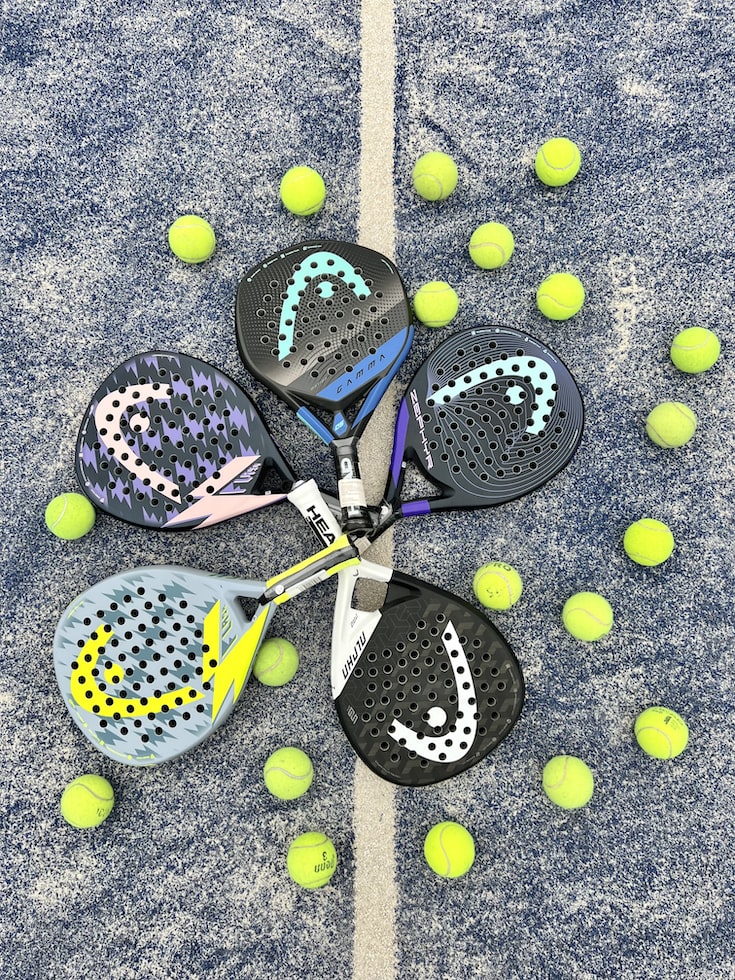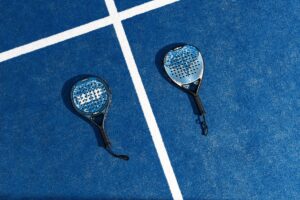A guide to the equipment needed to play padel: Padel explained
3 min read
A Guide to the Equipment Needed to Play Padel: Padel Explained
Are you a fan of tennis and squash? If yes, then you’re in for a treat because padel is the perfect combination of these two beloved sports! Padel, also known as padel tennis, is a fast-paced and exciting game that has been gaining popularity all around the world. In this guide, we will explain everything you need to know about the equipment required to play padel and help you dive headfirst into this thrilling sport!
The Padel Racket
The most important piece of equipment in padel is, of course, the padel racket. It is similar in shape to a tennis racket but with some subtle differences. Padel rackets are made of lightweight materials such as carbon fiber, fiberglass, or a combination of both. This ensures that the racket is easy to maneuver and doesn’t weigh you down during intense rallies.
Unlike tennis rackets, padel rackets have no strings. Instead, they feature a solid surface with small holes. These holes contribute to the racket’s unique sweet spot, allowing players to generate power and control the ball effortlessly. So, when choosing a padel racket, make sure to look for one that feels comfortable and suits your playing style.
The Padel Ball
When it comes to padel balls, you want something that is similar to a tennis ball but with a little less bounce. Padel balls are specifically designed to be used in this game, and they have a lower pressure than regular tennis balls. This lower bounce gives players more time to react and makes the game more enjoyable for everyone involved!
Padel balls are usually made of rubber and come in three different speeds: slow, medium, and fast. Beginners might want to start with slower balls as they are easier to control, while advanced players can opt for faster balls to spice up their game. No matter your skill level, always make sure to have a good supply of padel balls, as they tend to get lost during intense rallies.
The Padel Court
A padel court is a rectangular area enclosed by glass walls and wire mesh fencing. The dimensions of a padel court are smaller than a tennis court, making it easier for players to cover the playing area. The playing surface is normally made of artificial grass or concrete, providing a good grip and allowing for quick movements.
The glass walls are a unique feature of padel courts and add an exciting element to the game. Players can use the walls to their advantage by hitting the ball against them, causing unexpected angles and making it harder for their opponents to return the shot. Just be careful not to hit the ball too hard, as it might bounce right back at you!
The Padel Grip
Although not as talked about as the racket or the ball, the padel grip is an essential part of your equipment. It is the only point of contact between you and the racket, so choosing the right grip is crucial for comfort and control.
There are different types of grips available, ranging from tacky to dry. Tacky grips provide excellent traction and are highly recommended for players who tend to sweat a lot. Dry grips, on the other hand, offer a more secure hold and are great for players who prefer a firmer grip on their padel racket.
Final Thoughts
Now that you have a better understanding of padel equipment, it’s time to grab a racket, a ball, and hit the court! Padel combines the best elements of tennis and squash, offering a unique and thrilling experience for players of all ages and skill levels. So, gather your friends, start practicing your smashes and lobs, and get ready to have a blast playing padel!
Remember, padel is more than just a game. It’s an opportunity to bond with friends, improve your fitness, and have lots of fun. Embrace the challenge, enjoy the adrenaline rush, and let padel become your new favorite sport!






